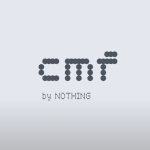Cadence has announced the introduction of verification solutions for GDDR7 memory which will go on to power next-gen GPUs.
Cadence Is Now Providing Verification Solutions For GDDR7 Memory, To Power Next-Gen GPUs
It is important to verify new memory solutions with proper tools prior to their launch into actual retail segments. That’s where these verification solutions come in which are shipped to potential customers and clients that are going to utilize next-gen designs in their future products. Cadence has now started providing verification solutions for GDDR7 memory.
The GDDR7 memory solution is going to succeed in GDDR6 and GDDR6X solutions which are yet to hit their peak potential. The new standard will be bringing support for PAM3 Signaling along with a lot faster pin speeds of up to 36 Gbps. Currently, the fastest memory solution is used by NVIDIA’s GeForce RTX 40 series graphics cards in the form of the GDDR6X memory solution which provides up to 22 Gbps pin speeds while AMD’s Radeon RX 7000 series cards utilize the standard 20 Gbps GDDR6 solution. Just for comparison, a 36 Gbps pin speed solution would deliver the following bandwidth figures:
128-bit @ 36 Gbps: 576 GB/s
192-bit @ 36 Gbps: 846 GB/s
256-bit @ 36 Gbps: 1152 GB/s
320-bit @ 36 Gbps: 1440 GB/s
384-bit @ 36 Gbps: 1728 GB/s
There’s a lot to be squeezed out of the GDDR6 generation yet since Samsung is already working on its GDDR6W design and GDDR7 solutions simultaneously which should double the capacity and performance while Micron is expected to push GDDR6X to even higher speeds in the coming future. The company has been mass-producing 24 Gbps dies but they are yet to be utilized by any consumer-grade GPU.
New Features Added in GDDR7
Clock
DRAM uses a single WCK clock for command-address and data latching, while it generates an internal divide-by-4 clock named CK4 that is used as a reference for latencies.
Read clock in GDDR7 can be configured in four different modes from the mode register:
Always running: As the name suggests, it is always running and stops during sleep modes
Disable: It stops running when configured in this mode
Start with RCK Start command: Read clock can be started by issuing the RCK Start command before reading out data. It can be stopped using the RCK STOP command. Host can start/stop as per requirement
Start with Read: Read clock automatically starts running when DRAM receives any command which involves reading data out. Also, here, it can be stopped using the RCK STOP command
With the help of the last two modes, power usage can be optimized by enabling RCK only during the periods when it is needed.
Command Driving:
In GDDR6, only one command can be issued at a time. GDDR7 commands are encoded in such a way that row and column commands use different bits of the CA bus. Hence, two independent commands can be issued in parallel. For example, Bank X can be refreshed by issuing a Refresh per bank command on CA[2:0], while Bank Y can be read by issuing a read command on CA[4:3] at the same time.
PAM3 Signaling:
GDDR7 uses PAM encoding in high-speed operation for data, CRC, ERR feedback, and the read clock. In PAM3 mode, 256 bits of data are encoded and transferred over 8 WCK clock cycles. It significantly improves the data rate compared to NRZ while having better SNR and eye margins compared to PAM4.
LSFR Mode of Data Training
Data training enables the host to find appropriate voltage levels and timings to transfer data reliably over high-speed data transfer. In FIFO mode of data training, the host writes data to FIFO and reads back custom patterns. For long continuous training, GDDR7 has a new LFSR mode of training in which random training data is generated using pseudo-random bit streams. Lane masking and eye masking options are also available in the LFSR. It has error counters for each lane, which keeps track of errors in write training. These can also be configured to keep track of each individual eye.
With all of that said, the GDDR7 memory solution wouldn’t appear this early. In fact, we expect it to enter the mass market by either late 2024 or sometime within 2025 since there’s a lot of room for improvement in the existing GDDR6 standard. So until GDDR6 is all but squeezed out, most GPUs won’t require a sudden shift to a newer memory standard but that said, GPUs that utilize GDDR7 memory need to be verified with the proper tools early on and these tools are essential for that purpose.
The post GDDR7 Memory For Next-Gen GPUs Enters Verification Stage As Cadence Intros First Solutions by Hassan Mujtaba appeared first on Wccftech.






